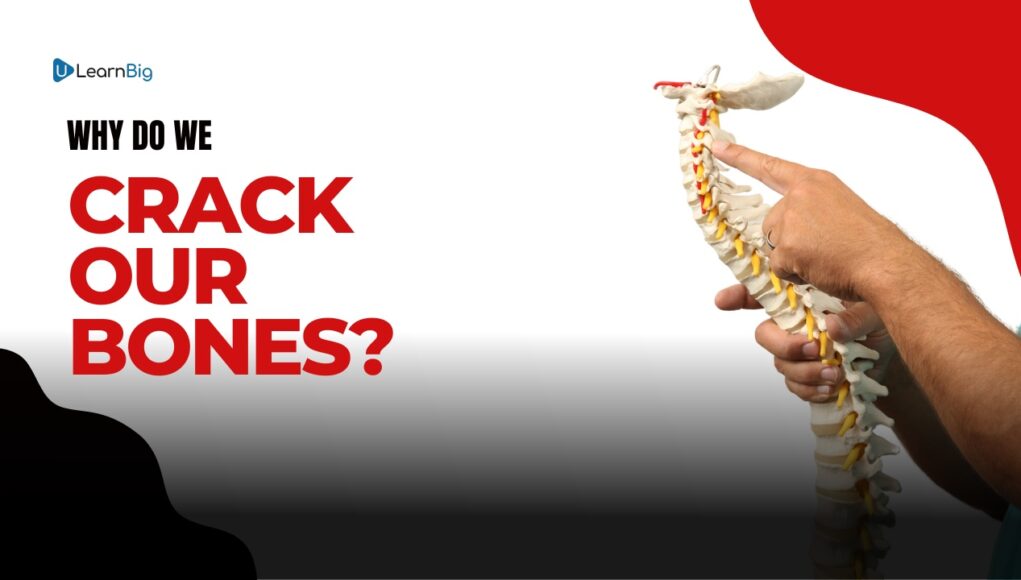Why Do We Crack Our Bones? Understanding the Science Behind Joint Popping
Many people crack their knuckles, necks, or backs, often finding the sensation both satisfying and relieving. But why do we crack our bones, and is it safe? This article delves into the science behind joint cracking, addressing common concerns and misconceptions.
What Causes the Cracking Sound?
The popping sound when you crack your joints is not actually from your bones but from your joints. Joints are the connections between bones, and they are surrounded by a capsule filled with synovial fluid. This fluid lubricates the joint and reduces friction during movement. When you stretch or bend a joint, the pressure inside the joint capsule changes, causing gas bubbles in the synovial fluid to form and collapse rapidly. This process, known as cavitation, produces the characteristic popping sound.
The Mechanism of Cavitation
Cavitation occurs when the pressure within the joint capsule drops below a certain threshold, allowing dissolved gases (primarily nitrogen) in the synovial fluid to form bubbles. When these bubbles collapse, they create a sharp, cracking noise. This phenomenon is similar to the way a carbonated beverage fizzes when opened; the change in pressure releases the gas dissolved in the liquid.
Differences in Joint Cracking
Not all joints crack the same way. The ease with which a joint cracks can depend on several factors, including the joint’s structure, the amount of synovial fluid, and individual anatomical differences. For instance, the knuckles in the hands are more prone to cracking than the joints in the toes due to their frequent use and movement patterns.
Is Cracking Your Joints Harmful?
Contrary to popular belief, cracking your joints does not cause arthritis. Multiple studies have shown no direct link between joint cracking and the development of arthritis. However, habitual joint cracking can lead to other issues. Excessive or forceful joint cracking can strain the ligaments and tendons around the joint, potentially leading to soft tissue damage. Additionally, if you experience pain, swelling, or reduced mobility when cracking your joints, it might indicate an underlying issue that requires medical attention.
Arthritis Myths
The myth that joint cracking causes arthritis likely stems from the misunderstanding of arthritis itself. Arthritis is a condition characterized by inflammation of the joints, which can be caused by a variety of factors, including age, genetics, and injury. The mechanical action of joint cracking does not contribute to these inflammatory processes.
Potential Risks
While occasional joint cracking is generally harmless, doing it excessively or with too much force can lead to problems. Over time, the ligaments that stabilize the joints can become overstretched, leading to joint instability. Additionally, forceful manipulation of the joints can cause injury to the surrounding tissues, such as tendons and muscles.
Why Do Some People Feel Relief After Cracking Their Joints
The sensation of relief after cracking a joint can be attributed to several factors. Firstly, the act of stretching the joint can increase its range of motion temporarily. Secondly, the release of endorphins, the body’s natural painkillers, can provide a feeling of comfort and relaxation. Finally, the reduction in pressure within the joint capsule after cavitation may contribute to the feeling of relief.
Psychological Factors
The relief felt after joint cracking can also have a psychological component. For many people, the act of cracking joints becomes a habitual behavior that provides a sense of control and satisfaction. This behavioral reinforcement can create a placebo effect, where the individual feels better simply because they expect to.
When to See a Doctor
While occasional joint cracking is generally harmless, there are instances where it is advisable to seek medical advice. If joint cracking is accompanied by pain, swelling, or a decrease in joint function, it could be a sign of a more serious condition such as tendonitis, bursitis, or cartilage damage. Consulting with a healthcare professional can help determine the cause and appropriate treatment.
Signs of Underlying Issues
It’s important to be aware of the signs that might indicate a more serious problem. Persistent pain, stiffness, or swelling in the joints should not be ignored. These symptoms could be indicative of underlying conditions that require medical intervention. Early diagnosis and treatment can prevent further damage and improve outcomes.
Preventive Measures
To maintain joint health and prevent issues, it’s essential to practice good habits. Regular exercise, maintaining a healthy weight, and avoiding repetitive stress on the joints can help keep them in good condition. Stretching and strengthening exercises can also improve joint flexibility and stability, reducing the likelihood of injury.
Cracking your joints is a common habit for many people, and understanding the science behind it can help dispel myths and alleviate concerns. While it is generally safe, it’s essential to be mindful of the frequency and intensity of joint cracking. If you experience any discomfort or other symptoms, it’s best to consult a healthcare professional to ensure there are no underlying issues.
Final Thoughts
Education about joint health and safe practices can help individuals make informed decisions about their habits. While the occasional joint crack is usually harmless, being aware of the potential risks and taking preventive measures can contribute to overall joint well-being.
































